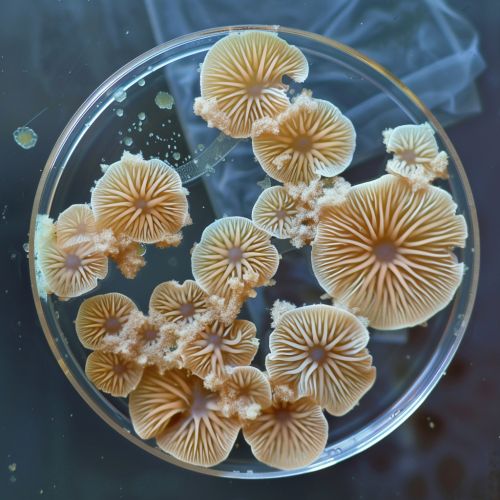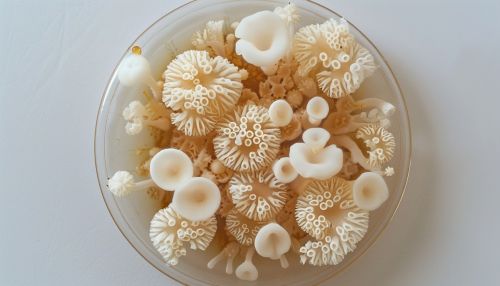Eurotium
Overview
Eurotium is a genus of fungi within the family Trichocomaceae. This genus is characterized by its ability to thrive in extreme environments, particularly those with low water activity. Eurotium species are known for their xerophilic nature, meaning they can grow in dry conditions that inhibit the growth of many other fungi. These fungi are often found in stored food products, textiles, and other materials where moisture is limited.
Taxonomy and Classification
Eurotium is classified within the kingdom Fungi, phylum Ascomycota, class Eurotiomycetes, order Eurotiales, and family Trichocomaceae. The genus Eurotium was first described by the German mycologist Heinrich Georg Winter in 1884. The taxonomy of Eurotium has undergone significant changes over the years, with molecular phylogenetic studies leading to the reclassification of many species.
Morphology
Eurotium species exhibit a distinctive morphology that includes both sexual and asexual reproductive structures. The sexual stage, known as the teleomorph, produces ascospores within asci, which are contained in cleistothecia. The asexual stage, or anamorph, is characterized by the production of conidia on conidiophores. The conidia are typically yellow to green and are produced in chains.


Ecology and Habitat
Eurotium species are xerophilic and can be found in a variety of habitats where moisture is limited. They are commonly isolated from stored food products such as grains, nuts, and dried fruits. These fungi are also found in textiles, paper, and other materials that are prone to desiccation. Eurotium species play a significant role in the spoilage of stored products, leading to economic losses.
Physiology and Biochemistry
Eurotium species possess unique physiological and biochemical adaptations that enable them to survive in low-moisture environments. They produce compatible solutes such as glycerol and trehalose to maintain cellular turgor pressure. Additionally, these fungi have specialized enzymes that allow them to degrade complex carbohydrates and other substrates under xerophilic conditions.
Industrial and Medical Relevance
Eurotium species have both beneficial and detrimental impacts on various industries. In the food industry, they are known for their role in the spoilage of stored products, which can lead to significant economic losses. However, some Eurotium species are used in the production of fermented foods and beverages. In the medical field, Eurotium species have been studied for their potential to produce bioactive compounds with antimicrobial and antifungal properties.
Genetic and Molecular Studies
Advancements in molecular biology have provided insights into the genetic makeup of Eurotium species. Whole-genome sequencing and transcriptomic analyses have revealed genes involved in stress response, secondary metabolite production, and other key physiological processes. These studies have also facilitated the identification of species-specific markers for accurate identification and classification.
Pathogenicity and Health Implications
While Eurotium species are generally not considered pathogenic to humans, they can pose health risks to immunocompromised individuals. Inhalation of conidia can lead to allergic reactions and respiratory issues. Some species produce mycotoxins that can contaminate food products and pose a risk to human health.
Control and Prevention
Controlling the growth of Eurotium species in stored products involves maintaining low humidity levels and proper storage conditions. The use of antifungal agents and preservatives can also help prevent contamination. In industrial settings, regular monitoring and sanitation practices are essential to minimize the risk of spoilage and contamination.
